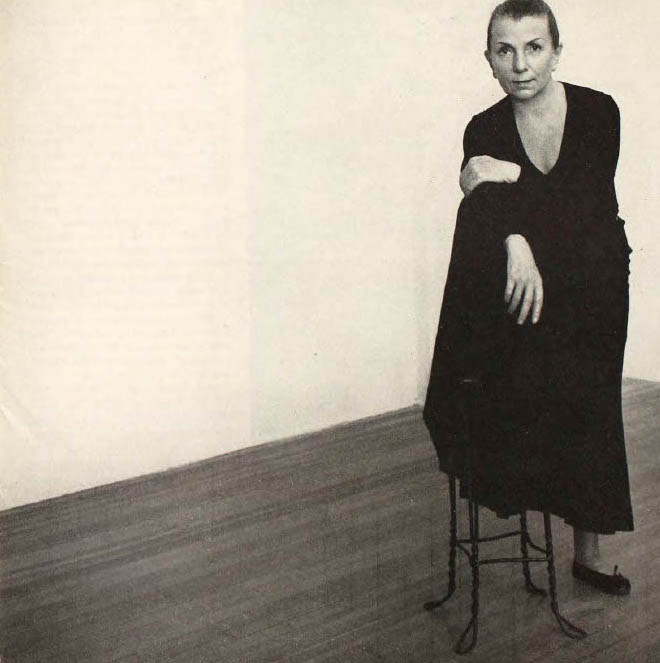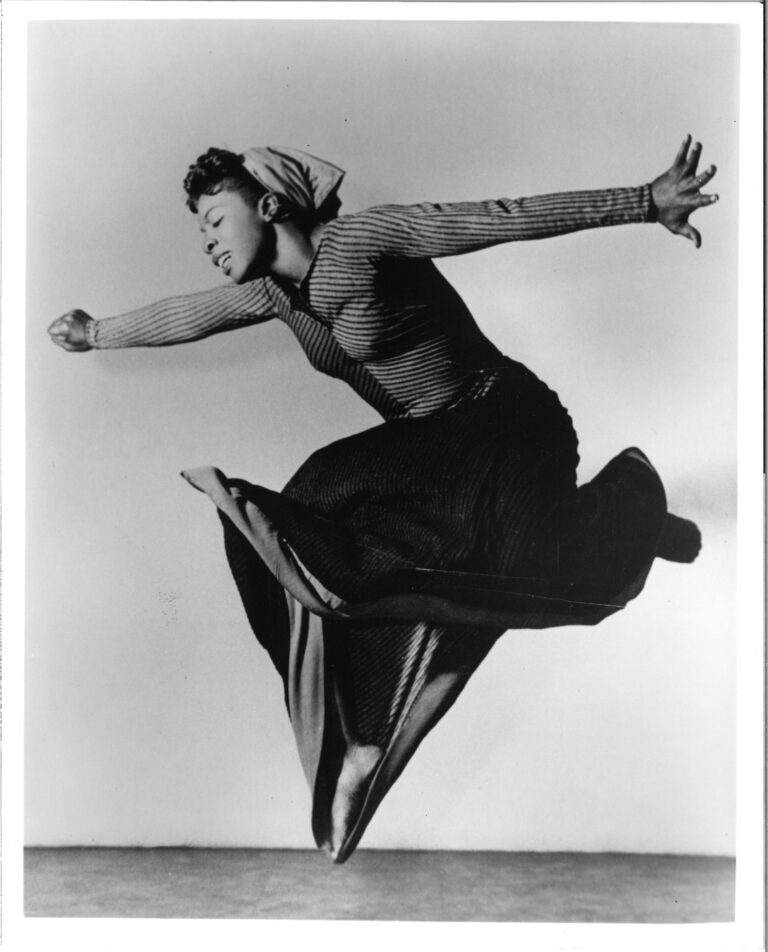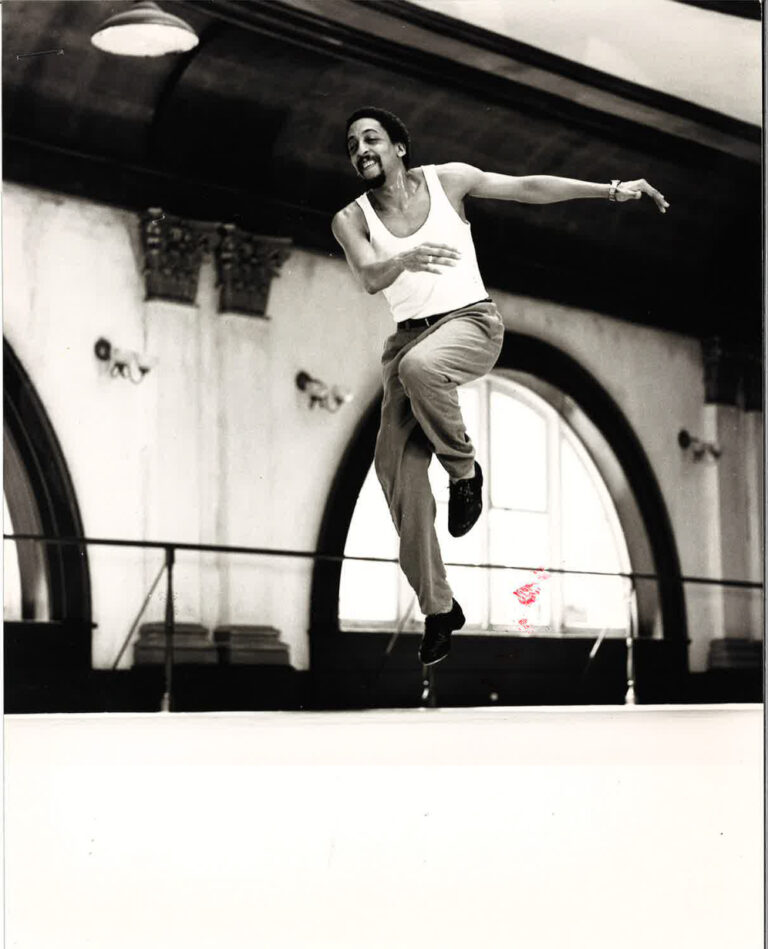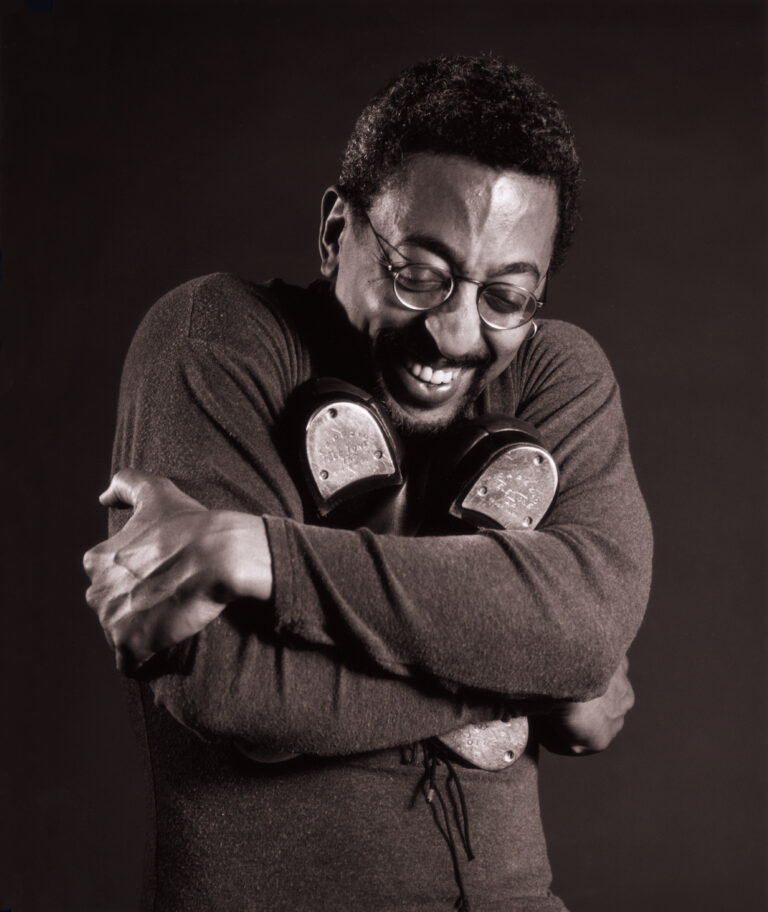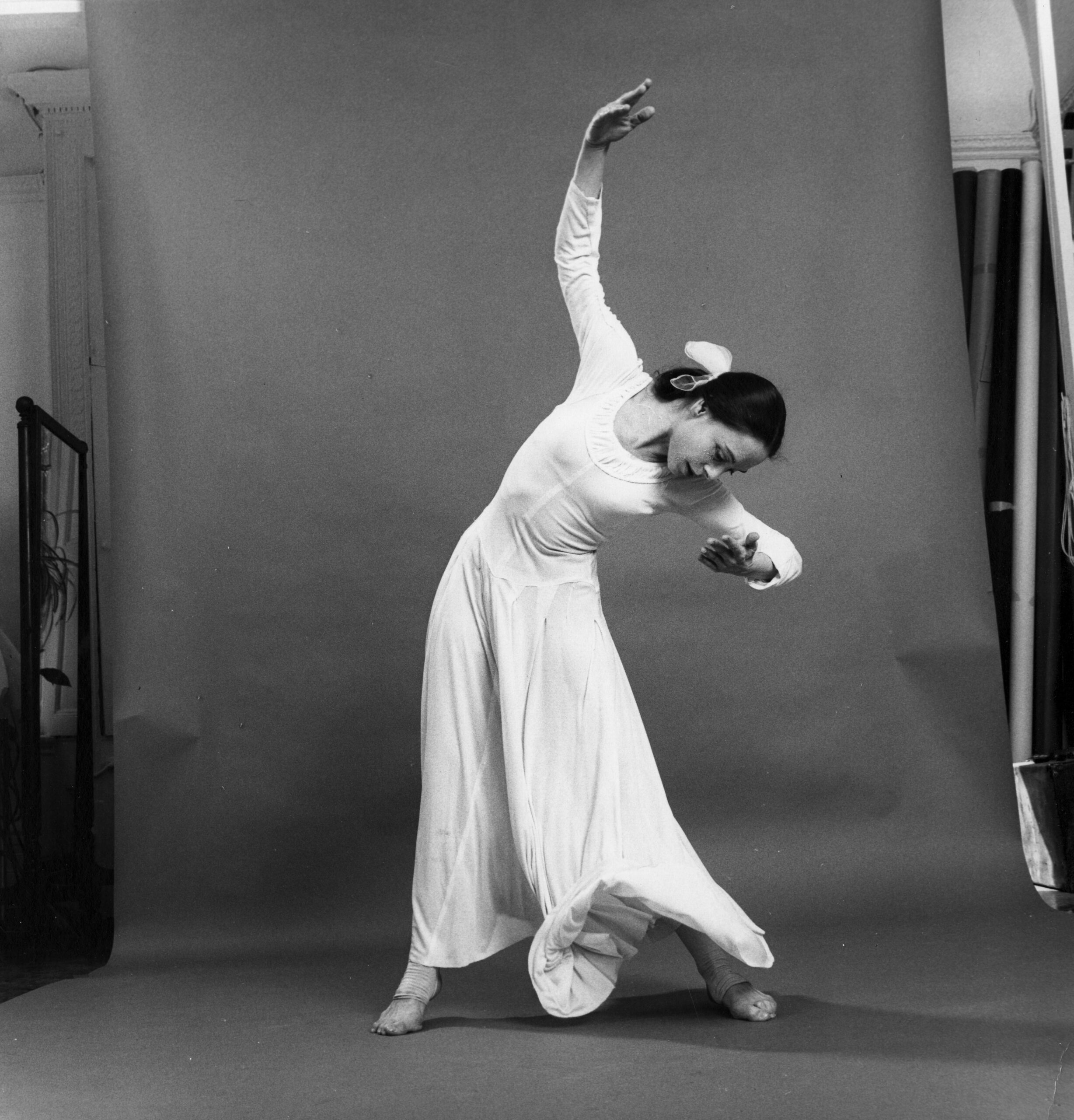
Like a pearl, an artist who can devote herself equally to performing, choreographing, and teaching, is uniquely rounded. Pearl Lang (1921–2009) was such a person, and she made no hierarchical distinctions in her three-pronged career.
Lang’s devotion to her craft led her to become one of the mid-century’s most heralded modern dancers and choreographers, famous for fusing contemporary dance with Jewish culture, and an impassioned teacher who carried on Martha Graham’s technique for three decades. Among those who developed through her ministrations are former Boston Ballet Artistic Director Bruce Marks, former Graham principal Christine Dakin, choreographer Pina Bausch, Eliot Feld and even Madonna. Prominent companies like Dutch National Ballet, Boston Ballet and Batsheva Dance Company have performed her original works.
Lang’s gravitation to dance began at age 4, while watching the Isadora Duncan Dance Company perform. The Chicago native made her first dance at age 10. Though her mother never wished her daughter to become a dancer, Lang’s affinity for movement in combination with music sprang from her Jewish heritage, which her parents made an integral part of her upbringing.
At 17, Lang was enrolled in the University of Chicago’s gifted children’s program, where she was first introduced to Graham’s style. Eager to study directly with the modern dance pioneer, Lang moved to New York City at 19 and was accepted into Graham’s company within months. In 1949, dance critic John Martin boldly suggested that Lang should perform the lead in Errand into the Maze, which Graham created for herself. Graham did not take to Martin’s suggestion, but she did create nine roles for Lang, including Deaths and Entrances (1943) and Appalachian Spring (1944). Lang also appeared on Broadway, starring in Carousel, Finian’s Rainbow, and Peer Gynt.
In 1952, she established The Pearl Lang Dance Theater, because Graham wasn’t willing to bill another choreographer on her stage. The first work that brought Lang accolades was Shirah (1960), based on a mystical, Hasidic parable. (Like her mentor, Lang was the star and her work mostly featured female characters.) Though Lang’s narrative style sprang from the Graham technique, her movement quality and dancing was more lyrical and rounded. Former company member and dance writer Gus Solomons, Jr., described her style as “ecstatic” and “girlish.” As Lang developed as a choreographer, she increasingly sought out Jewish themes, which served as inspiration for almost half of her 60 works. She spent three decades developing her full-evening dance drama, The Possessed (1975), which tells the story of a Jewish bride who is possessed by a disembodied spirit. In 2001, her company performed its last season at The Kaye Playhouse.
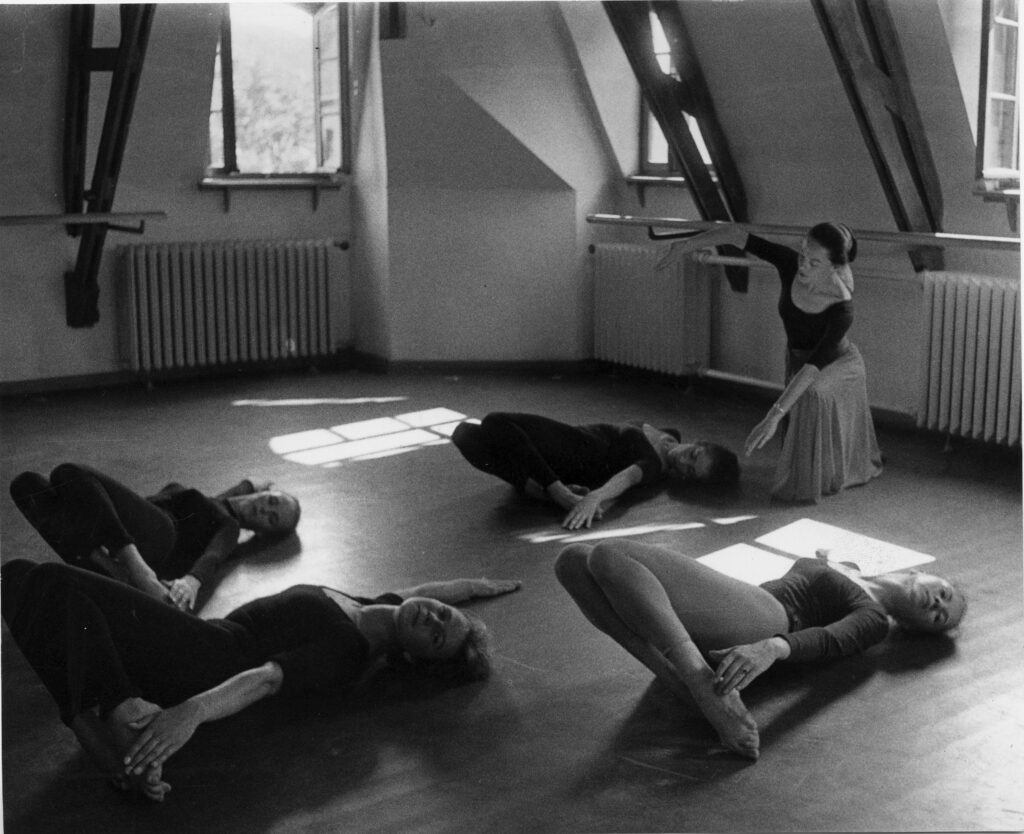
Although Lang embarked on an independent choreographic career, she never disassociated herself from the Graham company. From 1952 until the late 1970s, she performed with the Graham company as a guest artist. “Of all those that left the fold, Pearl was always allowed to come back,” says former principal Graham dancer Susan McLain. After Graham retired from the stage, Lang took over seven of her principal roles, including Clytemnestra and Herodiade. Her ability to perform Graham’s harrowingly difficult solos in her late 40s without a leg tremor, says former Graham principal dancer Peter London, derived from her analytical approach to movement. “She would break the most difficult material into steps” and practice them repeatedly, he says.
This ability contributed to her renown as a Graham teacher. She taught at Yale, Neighborhood Playhouse, Juilliard and Graham’s School of Contemporary Dance, where Lang remained until her death. She served as a direct link to Graham’s dramatic working style of the 1940s. London recalls one particularly memorable class where Lang began yelling “Thieves! Robbers! Liars! Criminals!” Office workers above the classroom rushed to her aid, thinking she was in danger. But her outburst was aimed at a dancer’s lackluster triplets. It was “her way of teaching you how to be dramatic on the stage,” says London.
In her later life, Lang further connected to her Jewish roots by developing, with her second husband, actor Joseph Wiseman, a community of artists and intellectuals who celebrated Jewish culture. Meanwhile, she was recognized in the dance community with numerous honors, including an honorary doctorate from Juilliard, an induction into Dance Library of Israel’s Hall of Fame and American Dance Festival’s 2001 “Chair for Distinguished Teaching” award. On February 24, 2009, Lang passed away at age 87 while recovering from hip surgery. Her intention was to get back to her favorite place, the dance studio.
Resources
Print:
“Jewish Dancers in America,” by Judith Brin Ingber, Jewish-American History and Culture, An Encyclopedia, 1992
“Pearl Lang,” by Joan Timmis Strasbaugh, Jewish Women’s Archive
“Pearl Lang and The Choreography of Prayer,” by Judith Brin Ingber, The Jewish Week, March 11, 2009
Deep Song: The Dance Story of Martha Graham, by Ernestine Stodelle, Schirmer G Books, 1984
The Life and Work of Martha Graham, by Agnes De Mille, Random House, 1956
Videos:
Martha Graham Dance on Film, by Nathan Kroll, The Criterion Collection, 1959
Excerpts 1 and 2 of And Joy Is My Witness, a ballet choreographed and performed by Pearl Lang and Company with Bruce Marks.
